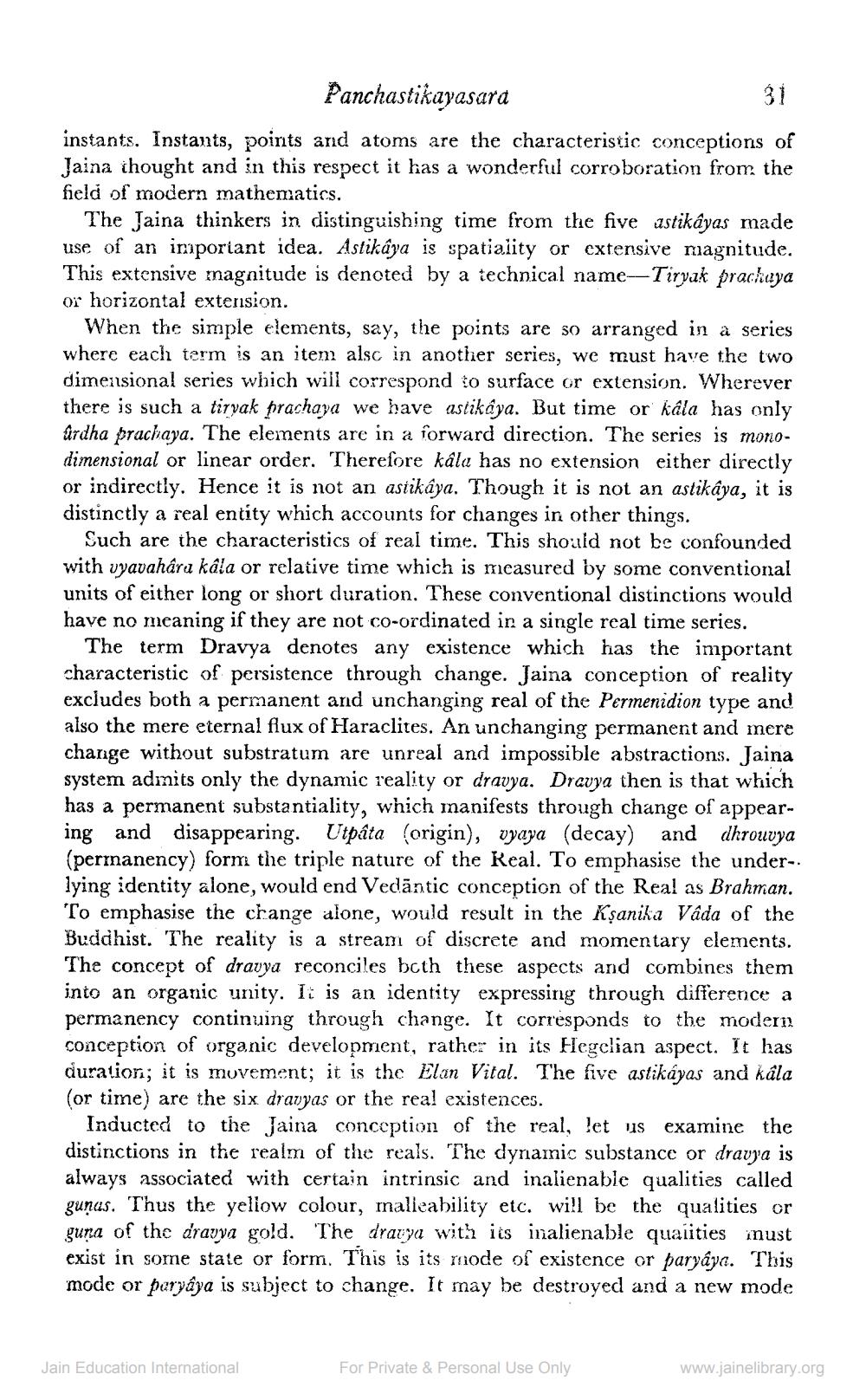________________
Panchastikayasara
instants. Instants, points and atoms are the characteristic conceptions of Jaina thought and in this respect it has a wonderful corroboration from the field of modern mathematics.
The Jaina thinkers in distinguishing time from the five astikayas made use of an imporiant idea. Astikaya is spatiality or extensive magnitude. This extensive magnitude is denoted by a technical name--Tiryak prachuya or horizontal extension.
When the simple elements, say, the points are so arranged in a series where each term is an item alsc in another series, we must have the two dimensional series which will correspond to surface or extension. Wherever
h a tiryak prachaya we have aslikaya. But time or kala has only ürdha prachaya. The elements are in a forward direction. The series is monodimensional or linear order. Therefore kála has no extension either directly or indirectly. Hence it is not an asiikâya. Though it is not an astikaya, it is distinctly a real entity which accounts for changes in other things.
Such are the characteristics of real time. This should not be confounded with vyavahara kala or relative time which is measured by some conventional units of either long or short duration. These conventional distinctions would have no meaning if they are not co-ordinated in a single real time series.
The term Dravya denotes any existence which has the important characteristic of persistence through change. Jaina conception of reality excludes both a permanent and unchanging real of the Permenidion type and also the mere eternal flux of Haraclites. An unchanging permanent and mere change without substratum are unreal and impossible abstractions. Jaina system admits only the dynamic reality or dravya. Dravya then is that which has a permanent substantiality, which manifests through change of appearing and disappearing. Utpâta (origin), vyaya (decay) and dhrouvya (permanency) form the triple nature of the Real. To emphasise the under-. lying identity alone, would end Vedāntic conception of the Real as Brahman. To emphasise the change alone, would result in the Kșanika Vâda of the Buddhist. The reality is a stream of discrete and momentary elements. The concept of dravya reconciles bcth these aspects and combines them into an organic unity. It is an identity expressing through difference a permanency continuing through change. It corresponds to the modern conception of organic development, rather in its Hegelian aspect. It has duration; it is muvement; it is the Elan Vital. The five astikayas and kåla (or time) are the six drapyas or the real existences.
Inducted to the Jaina conception of the real, let us examine the distinctions in the realm of the reals. The dynamic substance or dravya is always associated with certain intrinsic and inalienable qualities called guņus. Thus the yellow colour, ralieability etc. will be the qualities or guna of the drayva gold. "The dravya with its inalienable qualities must exist in some state or form. This is its mode of existence or paryaya. This mode or paryaya is subject to change. It may be destroyed and a new mode
Jain Education International
For Private & Personal Use Only
www.jainelibrary.org




